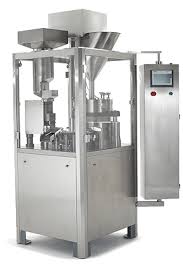Blister Packing Machine Maintenance Brief Intro
The reliability of a blister packing machine solely lies on the manner they are maintained and are kept compliant with safety and protection-from-danger standards. The machines that package pharmaceutical products or consumer goods play an important role and therefore must be serviced at very short intervals–and often often very accurately. Following a maintenance plan allows businesses to operate without interruption, minimize the cost of repairs, and prolong the life of the machine.
Daily Checks are your first line of defense
Visually look at the Machine: Do a Visual Inspection on the machine each day! Check for indications of wear and tear, like cracks or unusual vibration. Daily, check for loose bolts and worn belts to avoid big problem from a little problem.
Cleaning Procedures: Clean bedding daily, remove waste and product buildup daily. Dust and particles can build up in blister packaging machines and disrupt the mechanics of these machines. Always clean them with recommended cleaning agents and a soft cloth to prevent damage sensitive components.
Lubrication: Necessary for Operation
Keep Moving Parts Lubricated Lack of proper lubricant is a common cause of wear on mechanical components due to the generation of excessive friction. Apply the proper lubricant to the specific parts according to the manufacturer's instructions. Some models may need to be lubricated more frequently—if the treadmill is used more often.

Weekly and Monthly Check-ups
Temperature and pressure checks: Check the sealing temperature and pressure that sealing bars or elements read and provide uniform pressure, every single weekend. If the sealing is not consistent, your product can be spoilt or contaminated.
Clean All Sensors and Safety Switches: Verify all sensors and switches are working properly. Check that emergency stops and door interlocks arrest motion efficiently between power-up and power down_traj. These two factors are essential to the safety of the machine operator.
Air Pressure and Vacuum Systems: Check air pressure levels frequently (as often as twice daily) and inspect the performance of vacuum pumps. These are systems that are vital in shaping and accurately sealing the blister packs.
Keeping Records: Core Aspect
Keep Track Using a Maintenance Log Document the date, work performed, parts replaced, and any other issues discovered during inspections. This documentation is essential for debugging future issues and scheduling preventative maintenance.
Annual Professional Servicing
Schedule a full annual inspection & service by a registered technician. And by giving it the full deep cleaning/calibration/replace-anything-has-been-worn-out/all that jazz. Servicing by professionals ensures that the circuits function in their specific capacity and any problem that could potentially snowball into bigger issues is sorted out then and there.
Staying Proactive
Proactively keeping up with timely maintenance not only ensures your blister packing machine functions properly and efficiently but also protects the quality of the packaged products. Regular maintenance reduces downtime and also keeps with industry guidelines leading to continuity in business continuity.